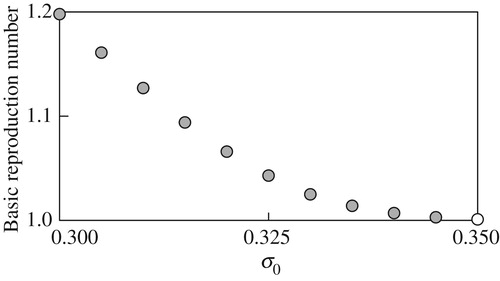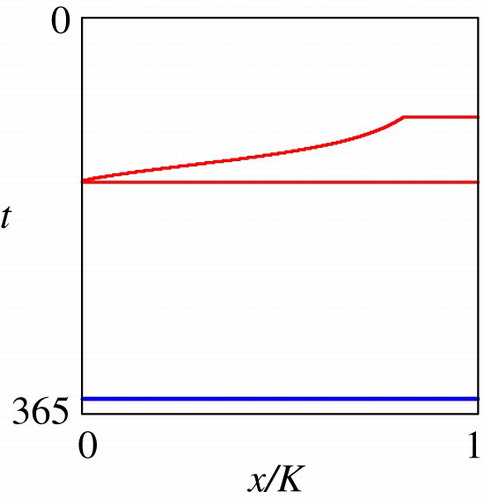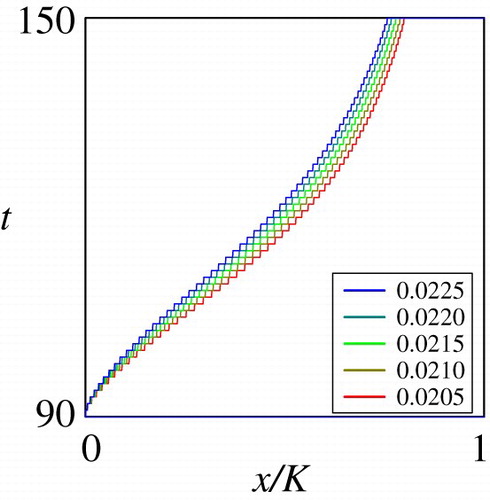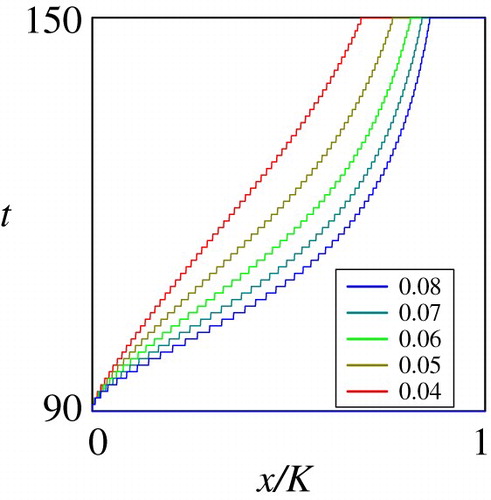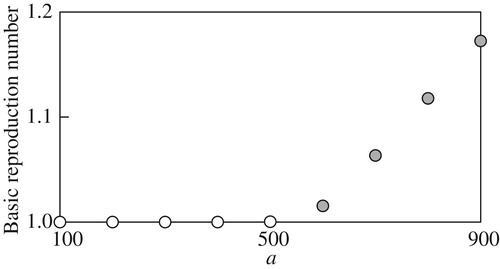Figures & data
Figure 1. Conceptual diagram of the population dynamics. The time is represented in the sense of mod .

Figure 2. Computed reduced value function . The contour lines represent 0.1, 0.2, 0.3, … 0.9 times of the maximum value of
in the plotted area.

Figure 3. Computed reduced value function . The contour lines represent 0.1, 0.2, 0.3, … 0.9 times of the maximum value of
in the plotted area.
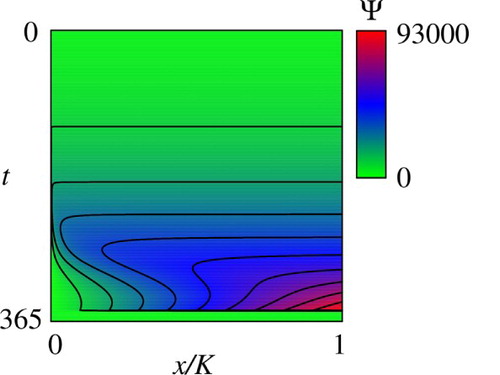
Figure 8. The basic reproduction number against different values of
(1/day). The grey circles represent
, while white circles represent
.
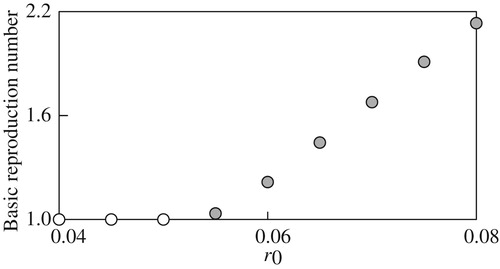
Figure 9. The basic reproduction number against different values of
(1/day1/2). The grey circles represent
, while white circles represent
.
